Evolution
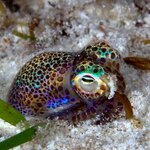
The bobtail squid and bioluminscent bacteria are just one of hundreds of examples of mutualism. Klaus Stiefel/Flickr, CC BY-NC
By Alex Jordan, University of Texas at Austin
Reproduction for a female fig wasp can be a nightmarish process. When she is ready to lay her eggs, she leaves the fig in which she was born and became pregnant and searches for another.
After she finds it, she enters it by squeezing through a narrow opening built for that exact purpose, often ripping off her wings and antennae in a violent act of motherly devotion.
Once inside the seed-filled chamber, two important…
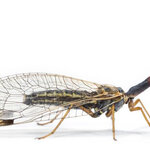
The 1KITE project (1,000 Insect Transcriptome Evolution) seeks to understand the millions of living insect species that shape our terrestrial living space and both support and threaten our natural resources by analyzing more than 1,000 insect transcriptomes, a set of all RNA molecules.
Using a dataset consisting of 144 carefully chosen species, 1KITE scientists have just presented reliable estimates on the dates of origin and relationships of all major insect groups based on the enormous molecular dataset they collected. They show that insects originated at the same time as the earliest…
8 percent of our genome derives from retroviruses that inserted themselves into human sex cells millions of years ago and right now the koala retrovirus (KoRV) is invading koala genomes.
Koalas are the only known organism where a retrovirus is transitioning from exogenous to endogenous. An exogenous retrovirus infects a host, inserts its genetic information into the cell’s DNA, and uses the host cell’s machinery to manufacture more viruses. When an exogenous retrovirus infects an egg or sperm cell and the viral genetic information is then passed down to the host’s offspring, the virus becomes…
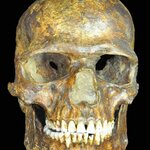
Scientists believe that Eurasians separated into at least three populations around 36,000 years ago: Europeans,Asians and a mystery third lineage, all whose descendants would develop the unique features of most non-African peoples after interbreeding with Neanderthals.
A new study on DNA recovered from a fossil of one of the earliest known Europeans, who lived 36,000 years ago in Kostenki, western Russia, has shown that the earliest European humans' genetic ancestry survived the Last Glacial Maximum - the peak point of the last ice age.
The study also narrows the timescale for…

Nature enjoys variety, that is why it seems like evolution must have been drinking during the creation of some of the crazier things in biology.
There is no intelligent reason why snakes and lizards have two genitalia while birds and people have one - or why the former group's paired structures are located somewhat at the level of the limbs while with humans and birds it appears a bit further down. In fact, snake and lizard genitalia are derived from tissue that gives rise to hind legs, while mammalian genitalia are derived from the tail bud. But despite such noteworthy contrasts,…
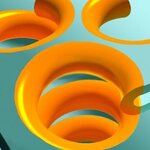
Biology can be inspirational. The spiral ramps in multistory parking garages, the way they are stacked and connecting parallel levels, are replications of helical structures found in a ubiquitous membrane structure in the cells of the body - Terasaki ramps in an organelle called the endoplasmic reticulum (ER), a network of membranes found throughout the cell and connected to and surrounding the cell nucleus.
A team of researchers have described endoplasmic reticulum geometry using the language of theoretical physics in Physical Review Letters.
The rough ER consists of a number of…
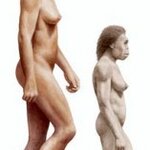
By Sarah King, Genetic Literacy Project
Since the discovery in 2004 of Homo floresiensis, an ancient hominid nicknamed “Flo” and also “hobbit”, after the diminutive villagers from J.R.R. Tolkien’s Lord of the Rings trilogy, due to her small size relative to modern humans, much debate has been raised over the origins of the species.
What were the genetic and historical events that led this isolated group of humans, which are believed to have migrated from mainland Africa or southeast Asia to the island of Flores and stood at about three and a half feet, to evolve such a small stature?
This…
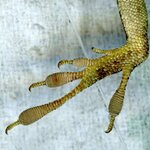
Scientists have documented the rapid evolution of a native lizard species as a result of pressure from an invading lizard species introduced from Cuba.
After contact with the invasive species, the native lizards began perching higher in trees, and, generation after generation, their feet evolved to become better at gripping the thinner, smoother branches found higher up. It only took about 20 generations - 15 years - but even within a few months, native lizards had begun shifting to higher perches and as time passed their toe pads had become larger, with more sticky scales on their feet…

Though Ebola tends to occur in waves, the filoviruses family to which Ebola and its lethal relative Marburg belong, are at least 16 million years old.
Filoviruses likely existed in the Miocene Epoch, and at that time, the evolutionary lines leading to Ebola and Marburg had already diverged, according to a paper inl PeerJ. It was once believed that the viruses only came into being some 10,000 years ago, coinciding with the rise of agriculture but now it is believed to have developed at the time when great apes arose.
The research does not address the age of the modern-day Ebolavirus.…

How did life originate? And can scientists create life? These questions have always occupied philosophers and scientists interested in the origin of life, and they impact technology of the future also.
If we can create artificial living systems, we may not only understand the origin of life - we can also revolutionize the future of technology.
Protocells are the simplest, most primitive living systems, you can think of. The oldest ancestor of life on Earth was a protocell, and when we see, what it eventually managed to evolve into, we understand why science is so fascinated with protocells.…